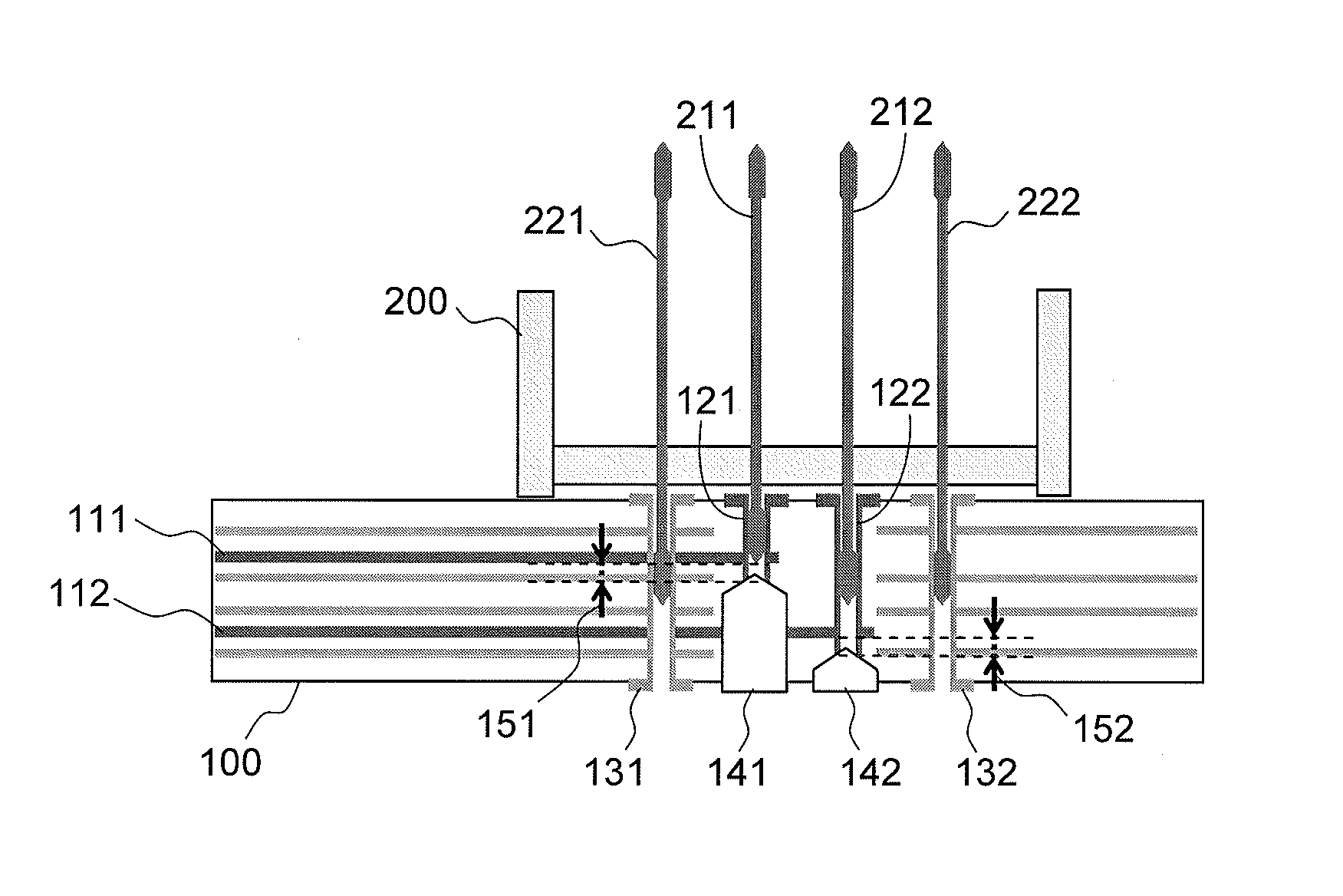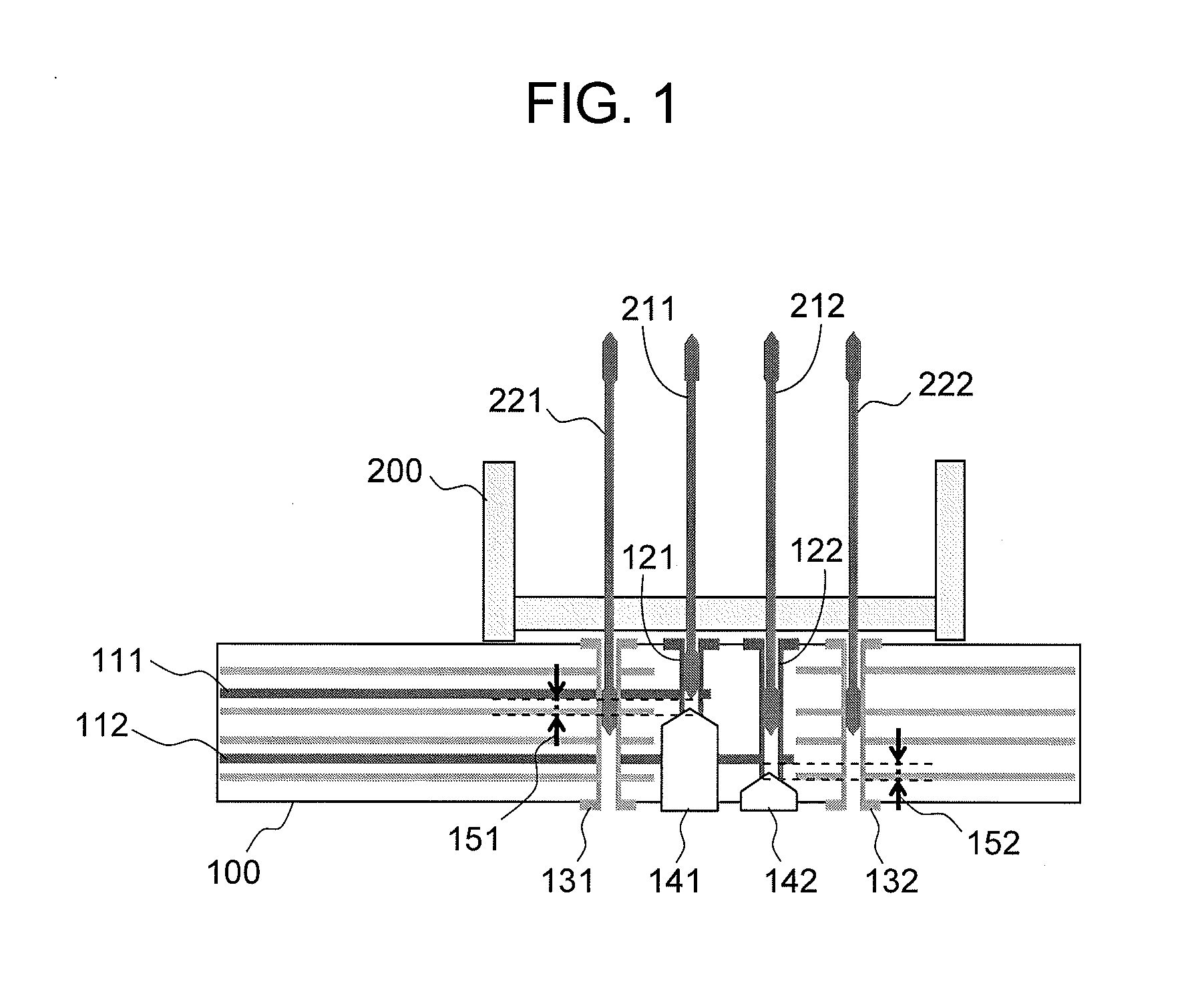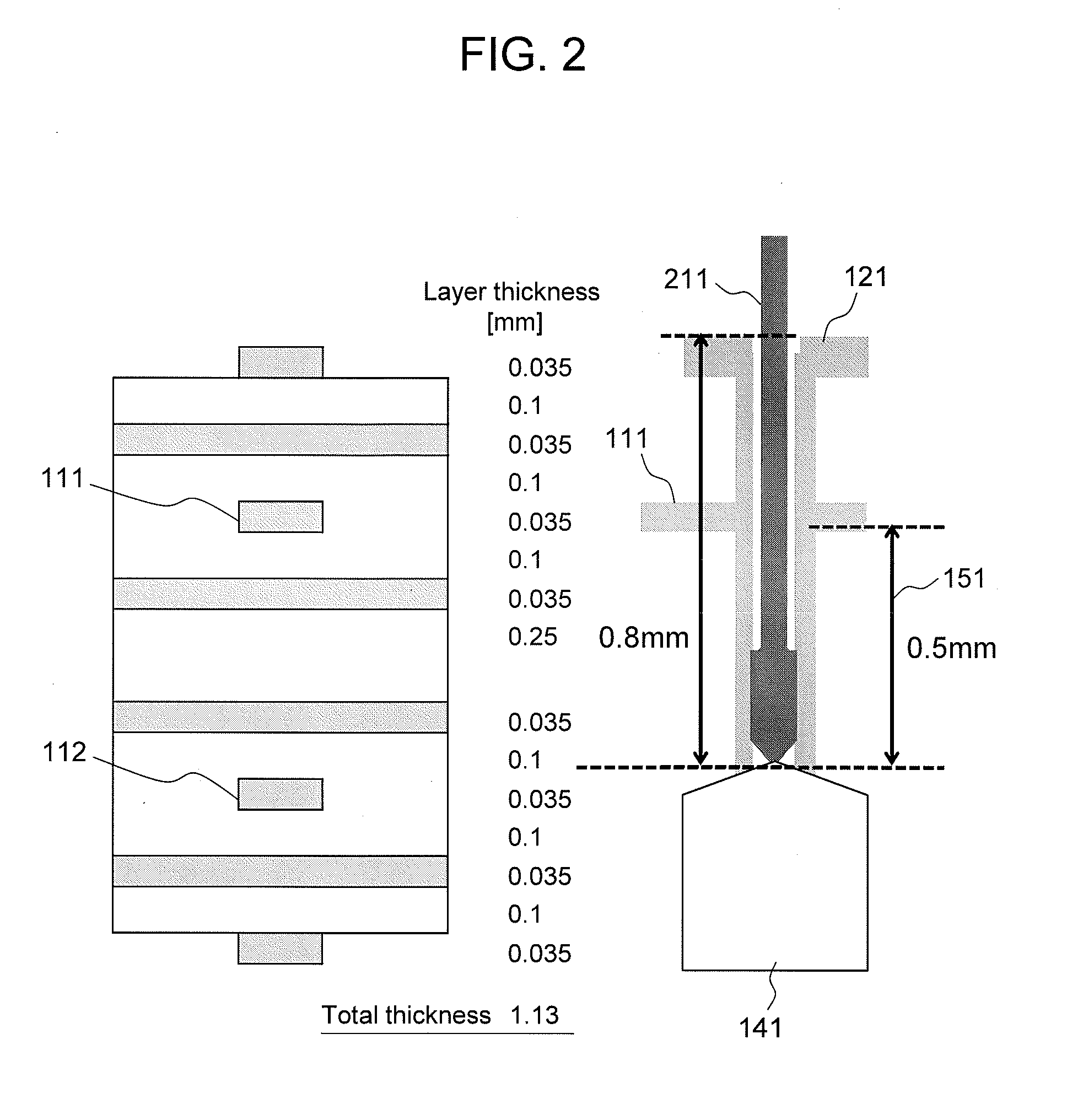Signal Wiring Board and Signal Transmission Circuit
a signal transmission circuit and signal wiring technology, applied in the field of signal wiring, can solve the problems of increasing the cost of manufacturing the signal wiring board, deteriorating the plugging-unplugging durability of the connector pin, and deteriorating the signal propagation characteristics, so as to reduce the length of the through hole, maintain the plugging-unplugging durability, and reduce the length of the stub.
- Summary
- Abstract
- Description
- Claims
- Application Information
AI Technical Summary
Benefits of technology
Problems solved by technology
Method used
Image
Examples
first embodiment
Conclusion
[0051]As described above, in the signal wiring board 100 according to the first embodiment, the through hole for signal pin 121 connecting to the signal wiring 111 is formed to be shorter than the other through holes. The through hole for signal pin 121 has a length in correspondence to the depth of the signal wiring 111, and the signal pin 211 is formed to be shorter than the other connector pins. With this configuration, the signal transmission characteristics over the signal wiring 111 can be maintained to be preferable. Each of the other connector pins has a longer length than that of the signal pin 211, thereby maintaining the plugging-unplugging durability as well as securing movable range in the lateral direction of the connector 200.
[0052]The signal wiring board 100 according to the first embodiment can transmit the high speed transmission signal using the signal wiring 111, which eliminates necessity of providing an additional signal wiring for transmitting the hi...
second embodiment
[0053]FIG. 5 is a sectional side view of the signal wiring board 100 according to the second embodiment of the present invention. In the first embodiment, descriptions have been provided on the example of configuring only the signal pin 211 to be shorter, but such a configuration requires each signal pin of the connector 200 to be processed individually, which is not preferable in the light of the manufacturing cost. In the second embodiment, all the signal pins are formed to have the same length. Specifically, the other connector pins are configured to have the same length as the shorter length of the signal pin 211.
[0054]The through hole for signal pin 122 is connected to the signal wiring 112 at a deeper position in the signal wiring board 100, so that the stub 152 does not become longer even if the signal pin 212 is formed to be shorter. Accordingly, the second embodiment can achieve the same effect as that of the first embodiment, and this configuration is advantageous in the l...
third embodiment
[0055]In the first and second embodiments, descriptions have been provided on the example of reducing the stub lengths by the back drill holes 141, 142 after forming the through holes extending through the signal wiring board 100, but the method of reducing the stub length is not limited to this. Other examples of manufacturing the signal wiring board 100 having a reduced stub length may include the following methods.
(Method 1 of Reducing Stub Length)
[0056]Signal wiring boards having via-holes and inner-layer wirings may be laminated so as to produce a multilayered wiring board. If the boards are laminated such that positions of through holes of each board are aligned with each other, through holes extending through the boards can be formed. If the boards are laminated such that the positions of through holes of each board disagree with each other, the signal wiring board having via-holes extending to intermediate positions in the laminated board can be obtained. Adjustment of the l...
PUM
 Login to View More
Login to View More Abstract
Description
Claims
Application Information
 Login to View More
Login to View More - R&D
- Intellectual Property
- Life Sciences
- Materials
- Tech Scout
- Unparalleled Data Quality
- Higher Quality Content
- 60% Fewer Hallucinations
Browse by: Latest US Patents, China's latest patents, Technical Efficacy Thesaurus, Application Domain, Technology Topic, Popular Technical Reports.
© 2025 PatSnap. All rights reserved.Legal|Privacy policy|Modern Slavery Act Transparency Statement|Sitemap|About US| Contact US: help@patsnap.com



